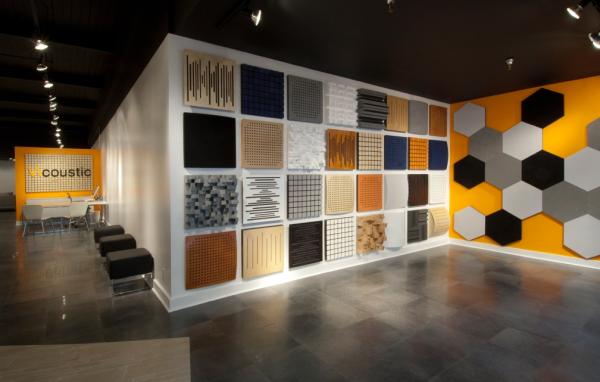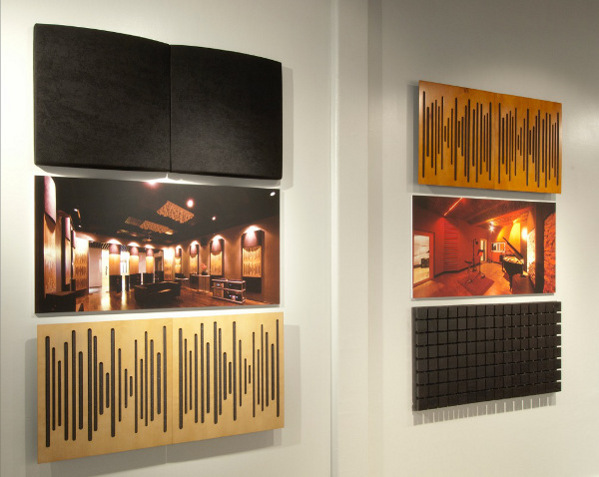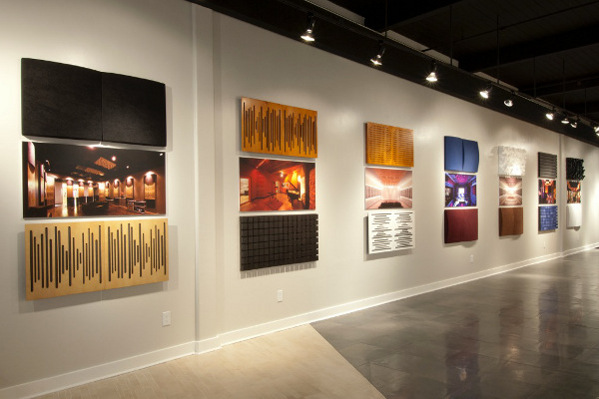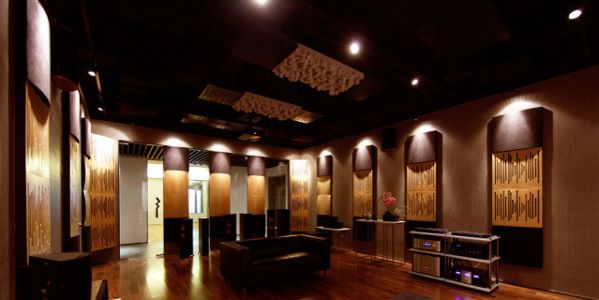Vicoustic: A Designer Take on Room Acoustics

Vicoustic is new to the U.S. market, having been here just short of a year. Based in Portugal, the company is a market leader in Europe for consumer and professional product spaces, serving personal home theater rooms and massive public spaces alike. While they’ve only been in the states a short while they have already done high profile work for the likes of Microsoft and Seattle’s Experience Music Project (now known simply as EMP).
My trip to their headquarters in Seattle reaffirmed my initial impressions. The office is located in the Seattle Design Center, home to upscale designer furniture and art galleries. The Vicoustic showroom fits right in, with a beautiful mix of acoustic panels covering the walls, allowing would-be customers to see the many options they offer. Most of the acoustic panels are 2 x 2-foot squares with varying designs tailored for absorption or diffusion. Vicoustic also offers traditional looking diffusors and a few panels that look like something you’d find in a traditional studio application, but the majority of the panels have a very stylish art house appearance.

Make no mistake; while most of these panels look trendy, they are designed from the ground up to provide measurable results. Vicoustic spent several years on core designs, and then dressed up all that science to create a product that they hoped people would be excited to hang on their walls. Most of the panels are foam based. Core materials are made by BASF and designed to meet specific acoustic performance criteria while also being fire retardant. Many of the acoustic squares have a wood panel on top of the foam that provides varying degrees of diffusion. Some can even be flipped over to vary the amount of reflection. Diffusion panels made of solid wood are also available.
I’m used to seeing high prices for generic fabric-wrapped panels so I was almost afraid to look at the price list since many Vicoustic panels have wood faces that have been milled into attractive pieces of art. Expecting the worst, I was thrilled to find out that most of the panels are just $99 each. A surprise to say the least!

Goodman was generous with his time and, after a short tour of the office, walked me through the typical client process. Manufacturing of all their products is done in Europe so I wasn’t able to see any of the assembly, but a large selection of products was on display. Loren Delong, one of the company’s interior designers, showed me some design work she was working on for a client. Vicoustic offers free interior design consultation, which includes a proposal for what I would call the “low hanging fruit” of room acoustics. The free proposal provides recommendations for bass traps and products to tame first reflections, but no real acoustical analysis.
Vicoustic can also do a full acoustic analysis of your room and make recommendations based on a software program called Odeon, which builds a computer model of the space. The work-up for a typical home theater room runs around $150 and includes a suggested set of treatments, an overview of room modes, and pre-/post-treatment reverberation times. Vicoustic guarantees the end results as long as the customer follows the proposal as written.
Acoustics are probably the most overlooked aspect of home theaters today. Too often I see people pouring money into new equipment hoping for slight benefits when huge gains could be made by addressing the biggest issue—the room itself. Stay tuned for an upcoming review of the Vicoustic process from proposal to finished project.

























































